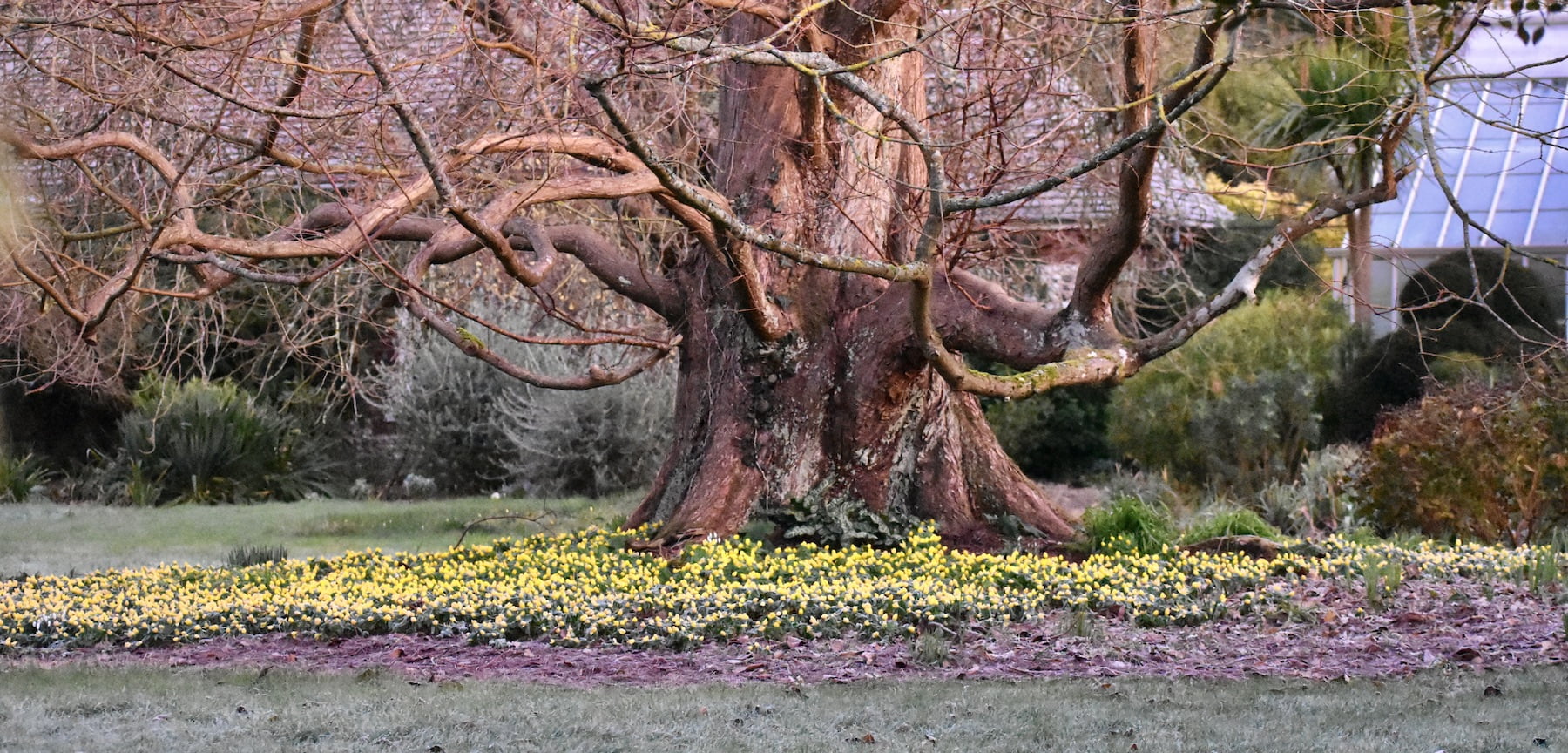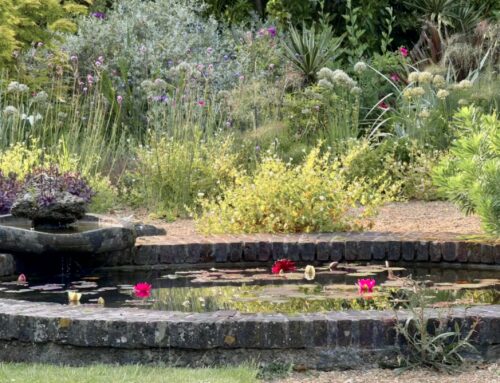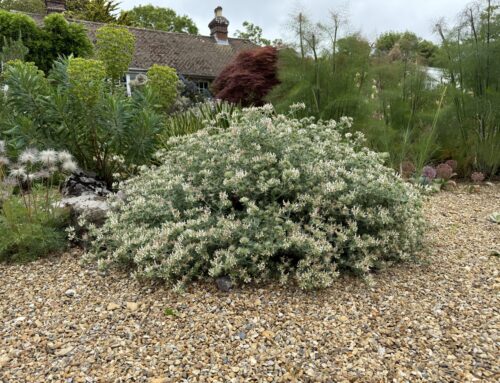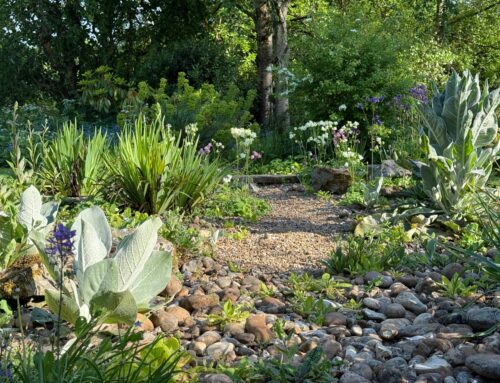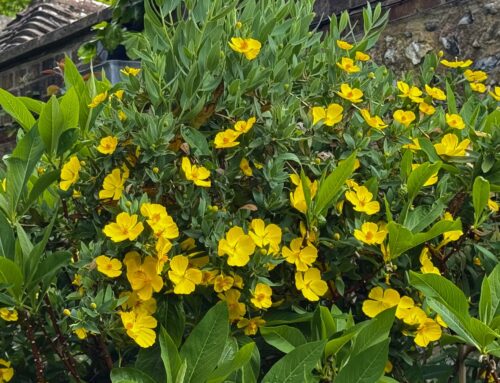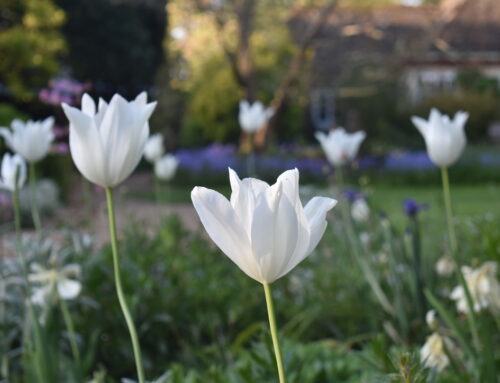John Brookes was a rarity in a nation of galanthophiles: He just didn’t like snowdrops.
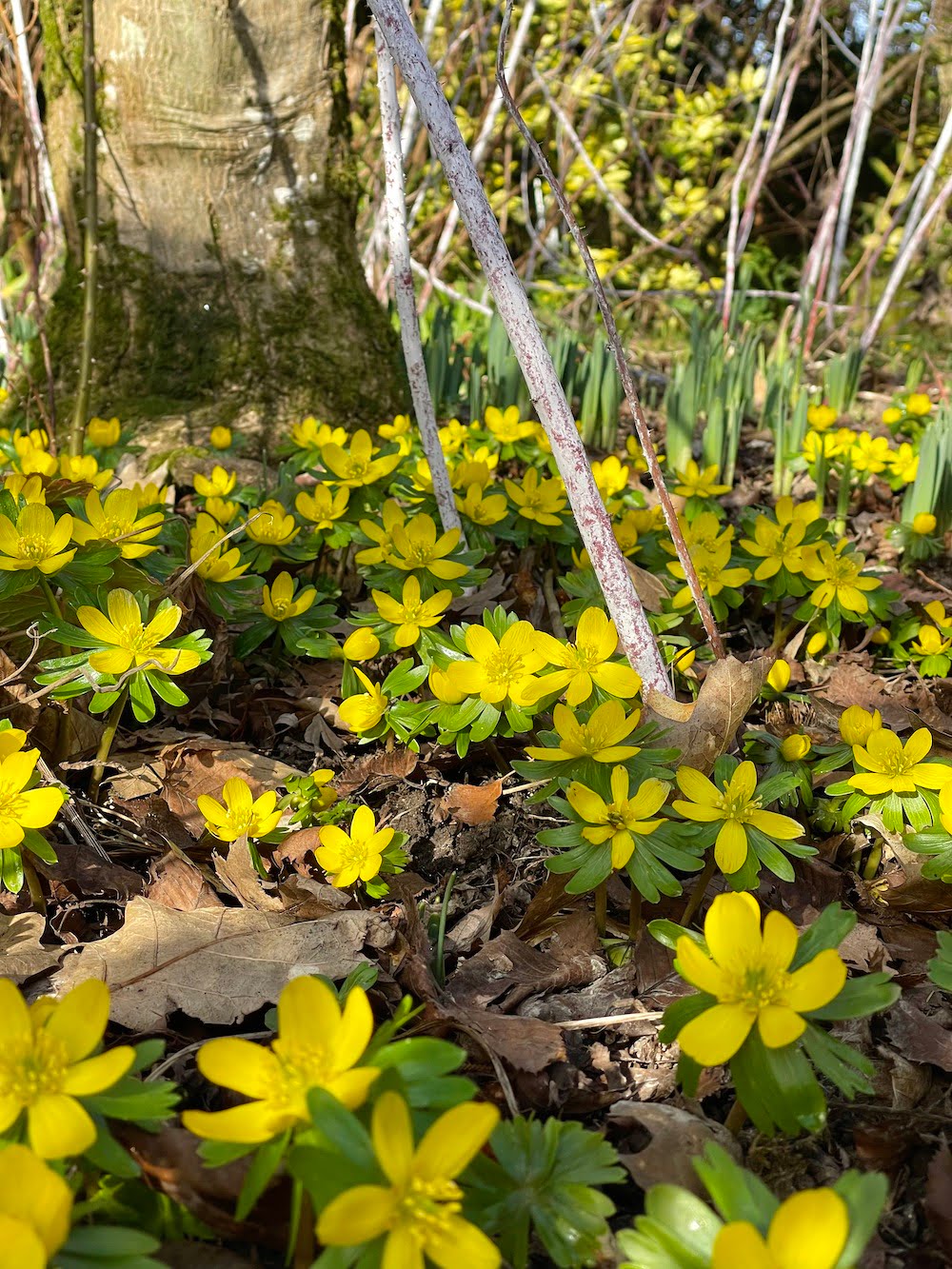
Winter aconites nestled under the acers and stark white stems of Rubus cockburnianus in the Acer Walk.
When asked why there were no snowdrops at Denmans Garden, he used to shiver dramatically, suggesting that their whiteness made him feel cold in wintertime. Funnily enough, since he died in March of 2018, snowdrops have appeared throughout the garden, presumably because, as we have cut back overgrown shrubs, sunlight has returned to areas where they lay dormant. Mrs. Robinson loved and planted them and the preponderance of snowdrops here are near her Cottage. But I digress.
I suspect that John’s answer to those who adore snowdrops would have been winter aconites which bloom abundantly at Denmans Garden at the same time as the snowdrops do. He must have loved them for their cheery yellow flowers that light up even the dreariest of February days.
Members of the Ranunculaceae (buttercup) family, winter aconites are native to Italy, Bulgaria, the Balkans, Turkey, and Iraq and were introduced to Britain in 1596. By 1838 they were recorded growing in the wild and have since naturalised throughout the UK.
Here at Denmans they boom as early as late January through mid-February. Aptly, their Latin name, Eranthis hyemalis, comes from the Greek ‘er’, referring to spring and ‘anthis’, meaning early-flowering, and the Latin ‘hyemalis’, means ‘winter-flowering’.
Low growing, winter aconites form beautiful gold and green mats as they colonise. Once the buttercup-like flowers die back, the green leaves lend ornamental interest until they die back completely which happens in late spring. Not fussy about light, it tolerates light shade, dappled shade, and full sun, but prefers alkaline, moisture retentive, humus-rich soil. Here at Denmans they have spread to the grass, woodland, and elsewhere.

